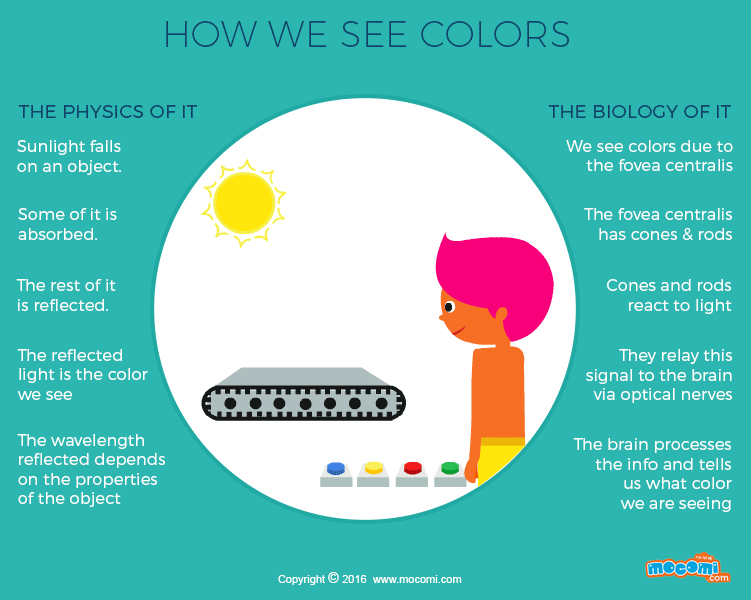How do you know if a banana is raw, ripe or rotten? Well, you could obviously take a bite and tell, but most of the times, you can tell just by looking. Especially if we’re talking about rotten bananas. A raw banana would look green, a ripe one would be yellow and a rotten one is most likely blackened. Have you wondered how we know the difference between these different colors? Let’s find out.
What are Colors?
All the colors we perceive are an effect of light. The seemingly colorless sunlight actually contains all the colors we can see, but at different wavelengths. In fact, color itself, is light of a particular wavelength, reflected.
When sunlight falls on an object, the surface of the object absorbs some of the light and reflects the rest of it. Which wavelengths of light are reflected or absorbed depends on the properties of the object.
So say the object is a ripe banana, it would absorb all the wavelengths of light except the ones that correspond to the color yellow. And we would thus see that a banana is yellow. This property of the object changes as the object changes, which is why a raw banana would look green, and a rotting banana would appear blackish.
Why do we see different Colors?
How do we know which color is which, i.e. how does our brain know the difference between these colors?
We have a tiny area called the fovea centralis all the way at the back of our eyes that is responsible for us seeing color. This area has millions of light receptors called cones and rods which react to light and tell our brains what colors we see. The cones in our eyes are active in light-rich environments and respond most strongly to the colors red, green and blue, in that order. So when we see the banana, the light from the banana hits the cones, stimulating them. They send the message across to our brain via our optic nerves, which processes the information and tells us what color we’re looking at. And we then know whether the banana is raw, ripe, or rotting.
The rods in our eyes are active in low-light environments, where cones fail to perform, but they perceive black and white, which is why it becomes difficult to determine the color of objects at night, or in very dim lighting.
How are Colors and Wavelengths related?
You now know that different colors have different wavelengths. The human brain can only recognize colors that have wavelengths within the visible spectrum. Colors that have wavelengths that are either less or more than this visible spectrum are invisible to us. Here’s where it gets interesting. The visible spectrum is different for different organisms. In fact, for some insects/ birds and fish, the visible spectrum is much wider, because they have more types of cones in their retina. Some organisms can even see ultraviolet light. This means that while we can see that a banana is yellow, with some black lines, a bee might see many more patterns, or maybe even more colors on the same banana. How’s that for a fun fact?
Related Article : Watch our video to understand the Sense of Sight.


